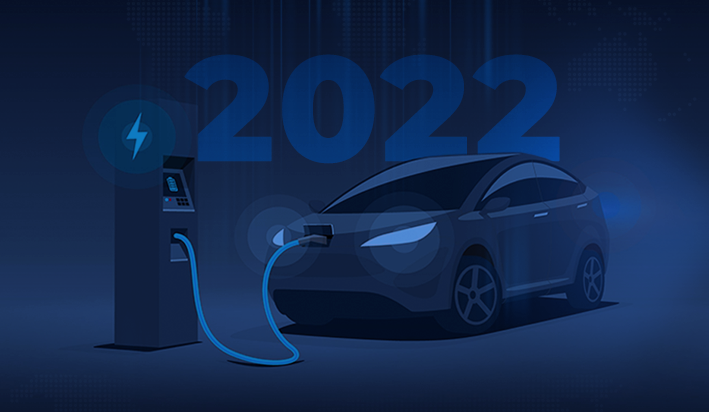The global EV business has taken a remarkable leap over the last decade, and we expect this growth to accelerate exponentially. The commuters are also taking EVs seriously and have started considering them a mainstream commuting option. This shift will let the EV industry gain incredible momentum in 2022. Other significant factors influencing the EV industry’s future are the consumer’s unique concerns, demographic needs, technology, infrastructure, and economic scenario. Let’s look into them in detail.
Policies & Incentives
Across the globe, many governments have been introducing policies and incentives to accelerate the transition to sustainable mobility. Recently, the Indian Government introduced the “Battery Swapping Policy” in their union budget 2022. According to that, EV owners can replace their depleted battery units with fully charged new battery units. This policy encourages standardization and interoperability among EV manufacturers and OEMs. It will also be instrumental in dealing with adoption hesitancy and range anxiety. Countries like Japan are highly focused on rapid EV development. Japan has doubled the subsidies for passenger ZEVs, and METI (Ministry of Economy, Trade, and Industry) announced that Japan targets all new passenger cars electrified by mid-2030. Major governments are also offering EV subsidies. The Chinese Government has increased its EV credits from 10-12% (2019-2020) to 14-18% (2021-2023). This will significantly impact the domestic and export EV market. Canada is targeting to boost ZEV (Zero-Emission Vehicles) sales up to 10% by 2025. Regulatory bodies worldwide are defining stringent emissions targets.
Batteries
One of the biggest challenges for the manufacturers is to incorporate viable battery solutions that have to meet the manufacturer’s requirements and consumer demands. Being said that, Lithium-Ion is the most competent battery option for the manufacturers for the next few decades. Manufacturers are expected to adopt lithium-ion batteries on a large scale because of their high energy density, fast recharging capability, and high discharge power.
This battery effectively addresses driving range and charging time which are significant concerns for EV buyers. The price of Lithium-Ion batteries is also becoming quite affordable, given the fact it has come down from USD 900/KWh in 2011 to USD 132/KWh in 2021.
Even though the pandemic effect prevails, Governments also encourage the battery manufacturers with subsidies to achieve emission-free environment goals.
Considering that batteries contribute up to 50% of an EV’s price, These measures will help manufacturers launch EVs at an affordable price range for the consumers. Interchangeable battery policies will encourage new OEMs to venture into the EV market and eliminate monopoly scenarios. This will bring healthy competition, and buyers can also enjoy a price advantage.
Technology
Automotive entities are increasing their R&D efforts exponentially to elevate the EV’s potential in so many aspects like performance, autonomous, and shared mobility concepts. The industry has yielded more than $400 billion in investments in the last decade, and $100 billion of that coming since the commencement of 2020. Marelli, an acclaimed automotive OEM based in Italy, has showcased their electric power train concept in CES 2022. This 800V eMotor can produce a torque of 600 nm and spin up to 25,000 RPM. To put that for comparison, Tesla’s performance EV – The roadster has 14000 RPM as its redline. The high rpm electric motor eliminates the need for heavy and expensive transmissions. These improvements indicate that high-performance, affordable EVs are around the corner. Tech giant Sony is working on Level 2+ ADAS – hands-free highway assist. This will lead to improvement in the overall commuting experience and safety standards of the EV sector.
Charging Infrastructure
“Range anxiety” due to the lack of charging stations is still a barrier for EV adoption among commuters. But, initiatives are in action to eliminate this barrier. Manufacturers realize that this is a problem for the market itself, taking constant efforts. Automotive conglomerates like BMW and VW negotiate strategic alliances to set up charging stations. Public charging infrastructure will also witness a considerable expansion this year. Facilities like restaurants, workspaces, transit stations will start to host charging stations. It is possible in both ways, either through EV manufacturers or third-party charging stations. New business models will be built around this charging infrastructure to improve the EV ecosystem.
Platform characteristics, battery technology assembly, and charging infrastructure effects are the core of the EV market’s growth. As the automotive industry adopts electrification, EV trends rely heavily on stakeholder partnerships and government initiatives. This will support leading OEMs to reduce the fixed-cost burden of R&D, tooling, and plants and enable multiple model variants.
SRM Technologies is the go-to MSP for leading automotive manufacturers and OEMs. We facilitate them with cutting-edge technologies and innovations to unlock growth opportunities.
Contact us to know how we can strategize and revolutionize your automotive business.






